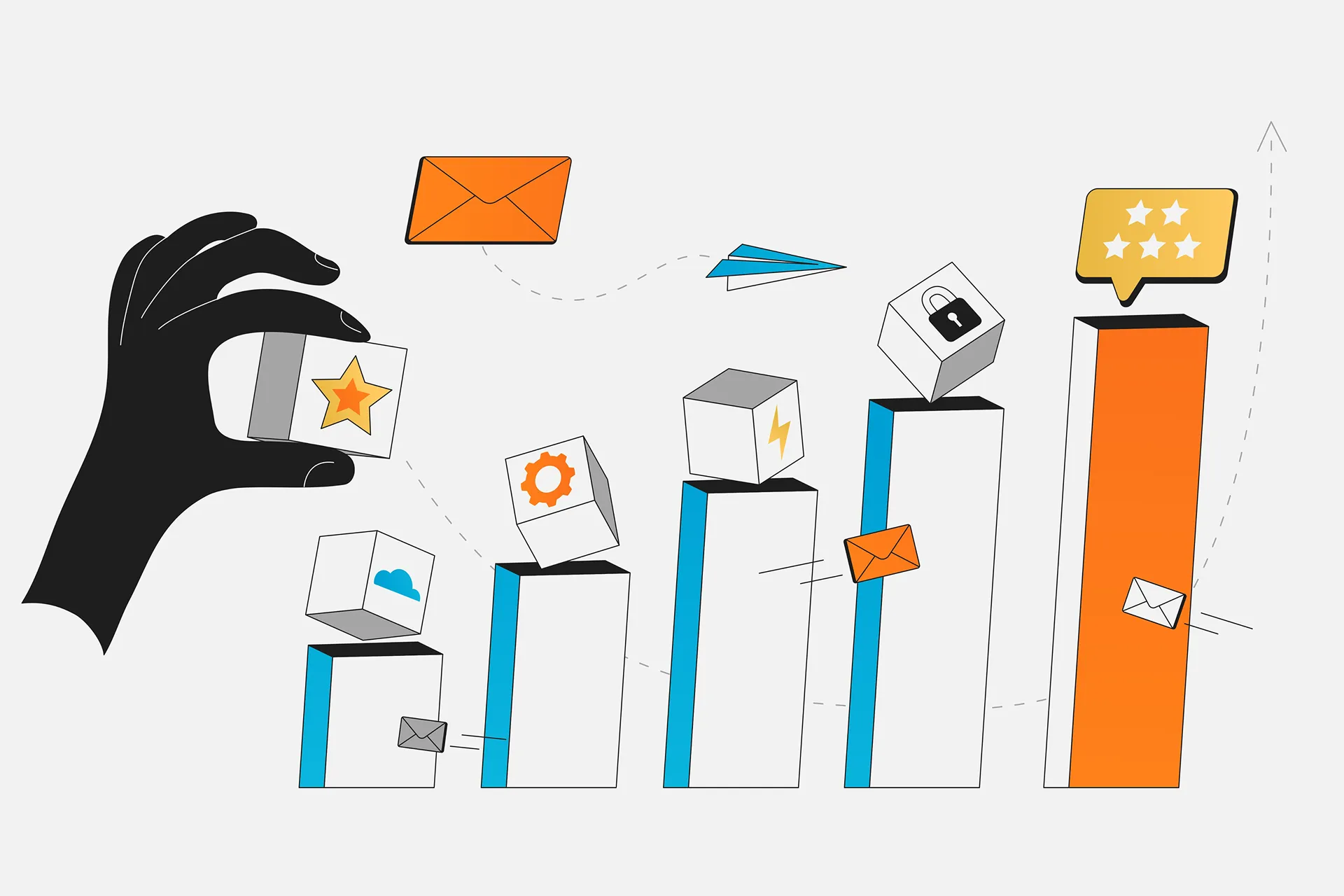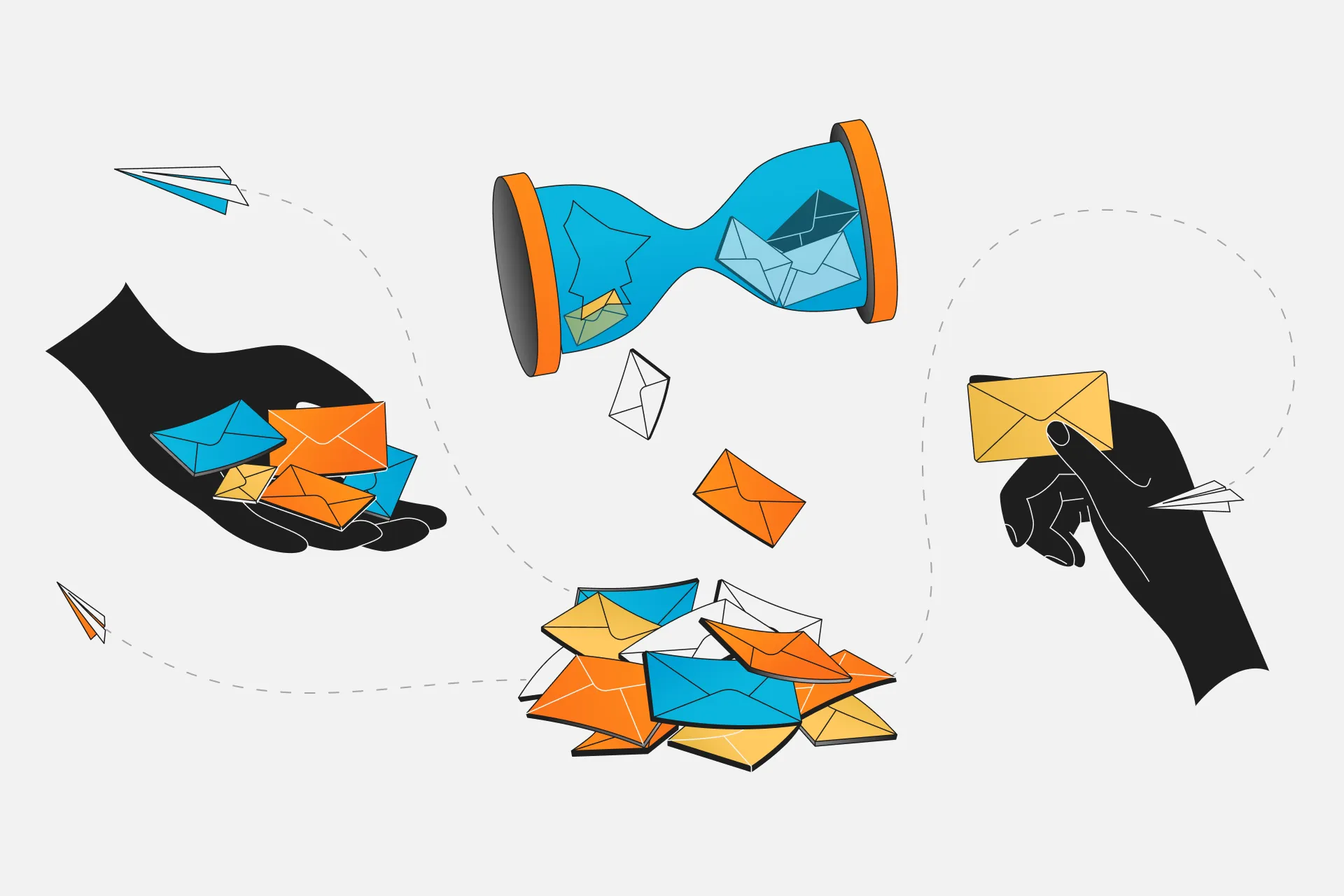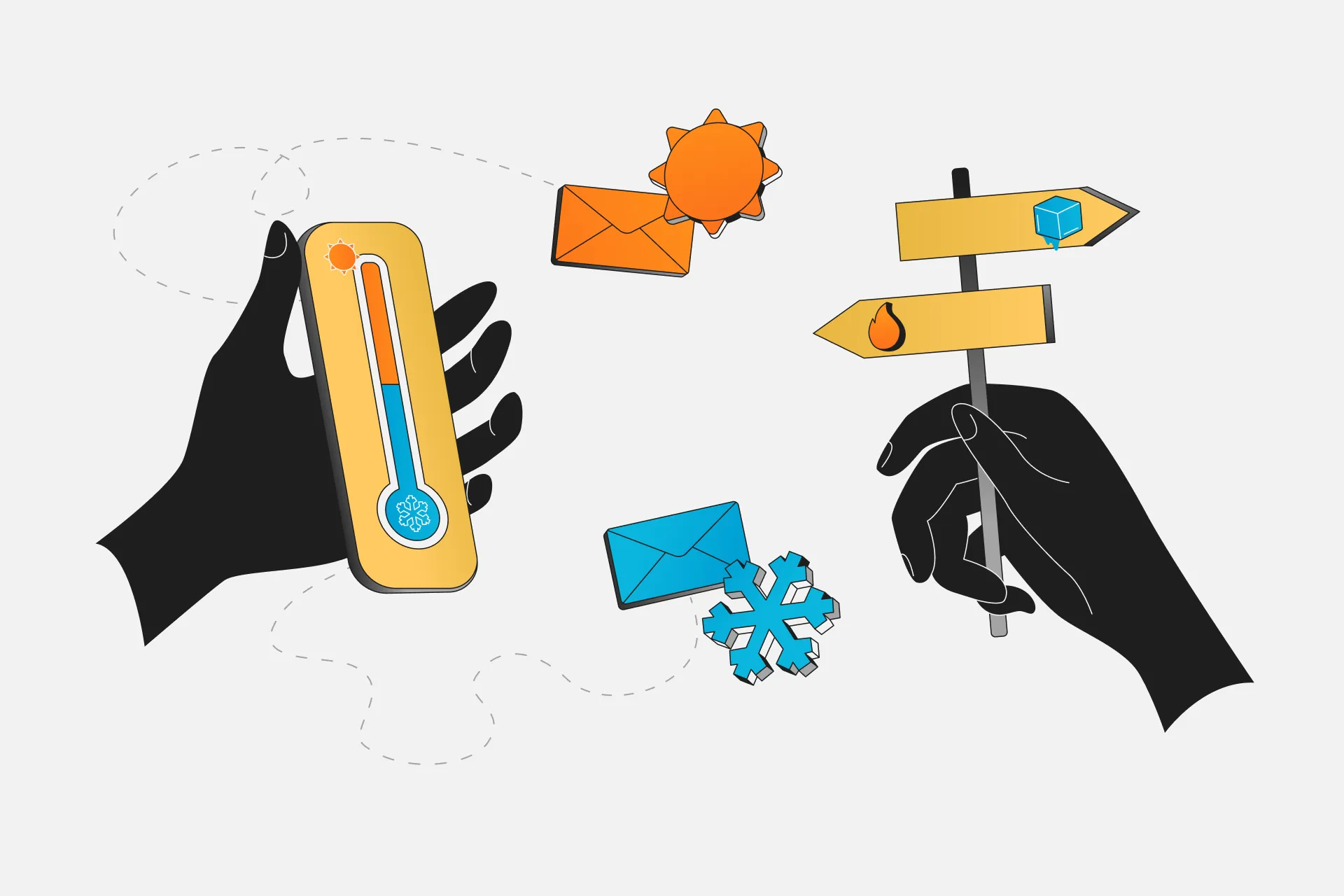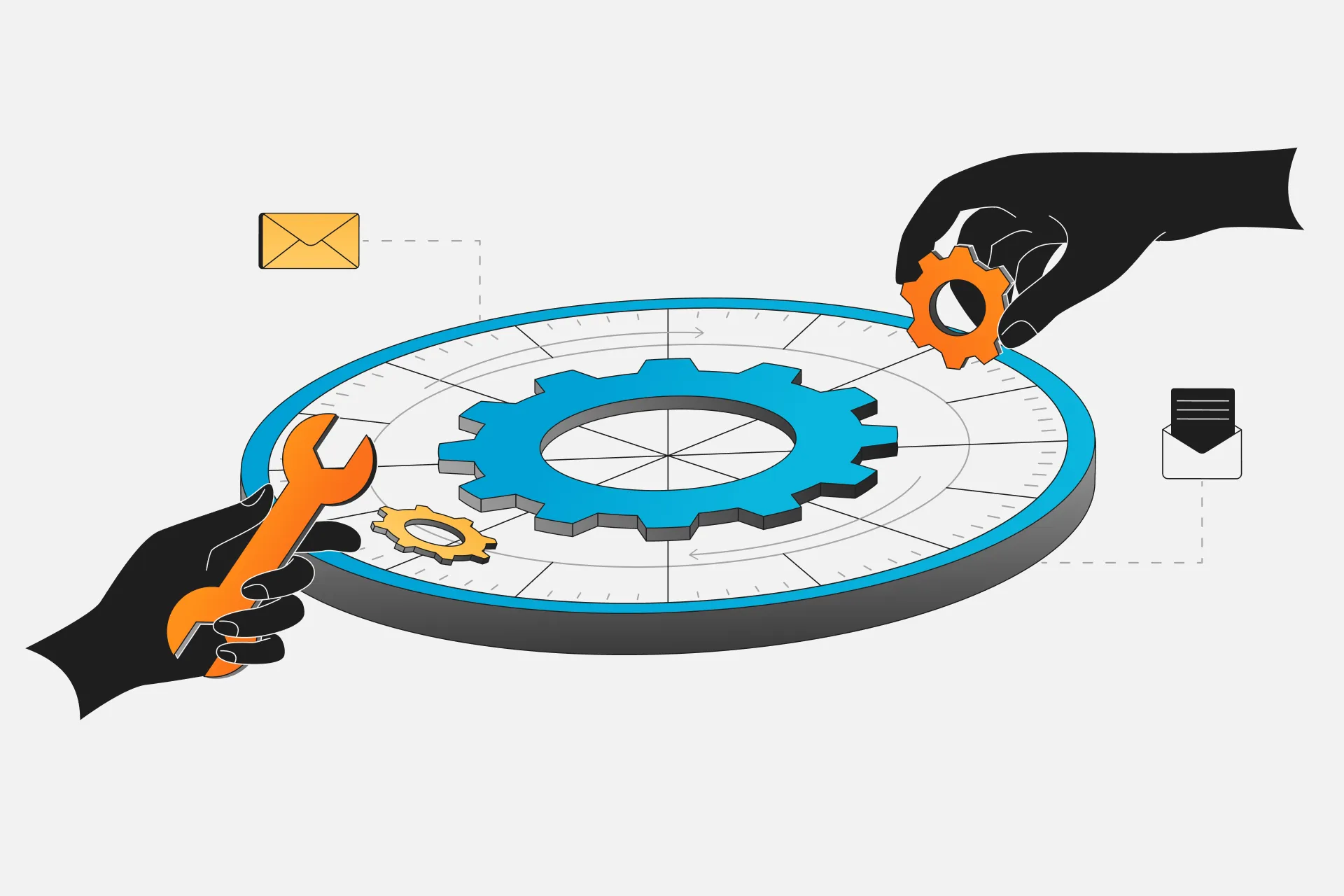
12 Essential Email Deliverability Best Practices for Cold Email Success
Nothing’s more frustrating than spending hours on a cold email campaign, only to watch it vanish into spam. You could have the most irresistible offer, the perfect personalization, and the snappiest subject line – and it won’t matter if it never lands in front of your prospect.
But how do you make sure our emails don’t disappear into the void and get the attention they deserve?
Pssst… the secret is optimized email deliverability. It’s the single most important thing to get right if you want cold emails that actually work. Nail it, and your campaigns go from frustrating to profitable.
After years helping businesses get emails out of spam and in front of the right prospects, we know all the best practices for cold email deliverability.
In this guide, we’re breaking down 12 actionable strategies to get your emails delivered, read, and replied to.
Best Practices for Cold Email Deliverability
Over 91% of cold outreach emails get absolutely no reply. Yep, you read that right. So why do some emails crush it, while most never get opened?
Most of the time, it’s not because your copy isn’t hitting home. The problem is deliverability.
Spam filters, strict domain verification, and inactive contacts can all silently bury even your most carefully created emails.
The good news? Getting deliverability right comes down to a few key moves. After sending, warming, and monitoring 10,000+ cold emails, we know what actually works.
That’s why we’ll let you in on all the cold email strategies for deliverability that actually make a difference. Here’s a quick look at the 12 essential practices we’ll cover today:
- Authenticate your emails properly
- Warm up your sending domain gradually
- Use the right domain setup
- Keep your lists clean and targeted
- Stay away from spammy content
- Write subject lines people actually open
- Make it easy to reply (and opt out)
- Send at a steady rhythm
- Respect privacy and compliance rules
- Monitor your deliverability regularly
- Encourage engagement
- Avoid overloading a single domain or inbox
Now let’s dive into each one, so you can see exactly why it matters.
- Authenticate Your Emails Properly
Before your email even lands in a prospect’s inbox, it needs to prove it’s legit. Email authentication protocols like SPF, DKIM, and DMARC act as digital ID checks for your domain. They tell email providers, “Yep, this sender is trustworthy,” and prevent your messages from being flagged as spam.
So, without proper authentication, even the most polished email can get buried or bounced. Setting it up correctly builds sender reputation, keeps inboxes happy, and lays the foundation for all your cold email efforts.
- Warm Up Your Sending Domain Gradually
New domains or inboxes don’t automatically earn trust with email providers. If you start blasting hundreds of emails right away, spam filters will notice – and your deliverability will tank.
Gradual warm-up means slowly increasing your sending volume over days or weeks while maintaining engagement. This helps build a positive sender reputation and signals to providers that your emails are wanted, not spam.
Need help with email warm-up? Here are our top picks for warm-up tools!
- Use the Right Domain Setup
Your domain is your cold email’s reputation on steroids. Gmail, Outlook, and the rest check it before anything else. So, if your domain isn’t set up correctly or misclassified, filters may get suspicious, and your emails could end up in spam.
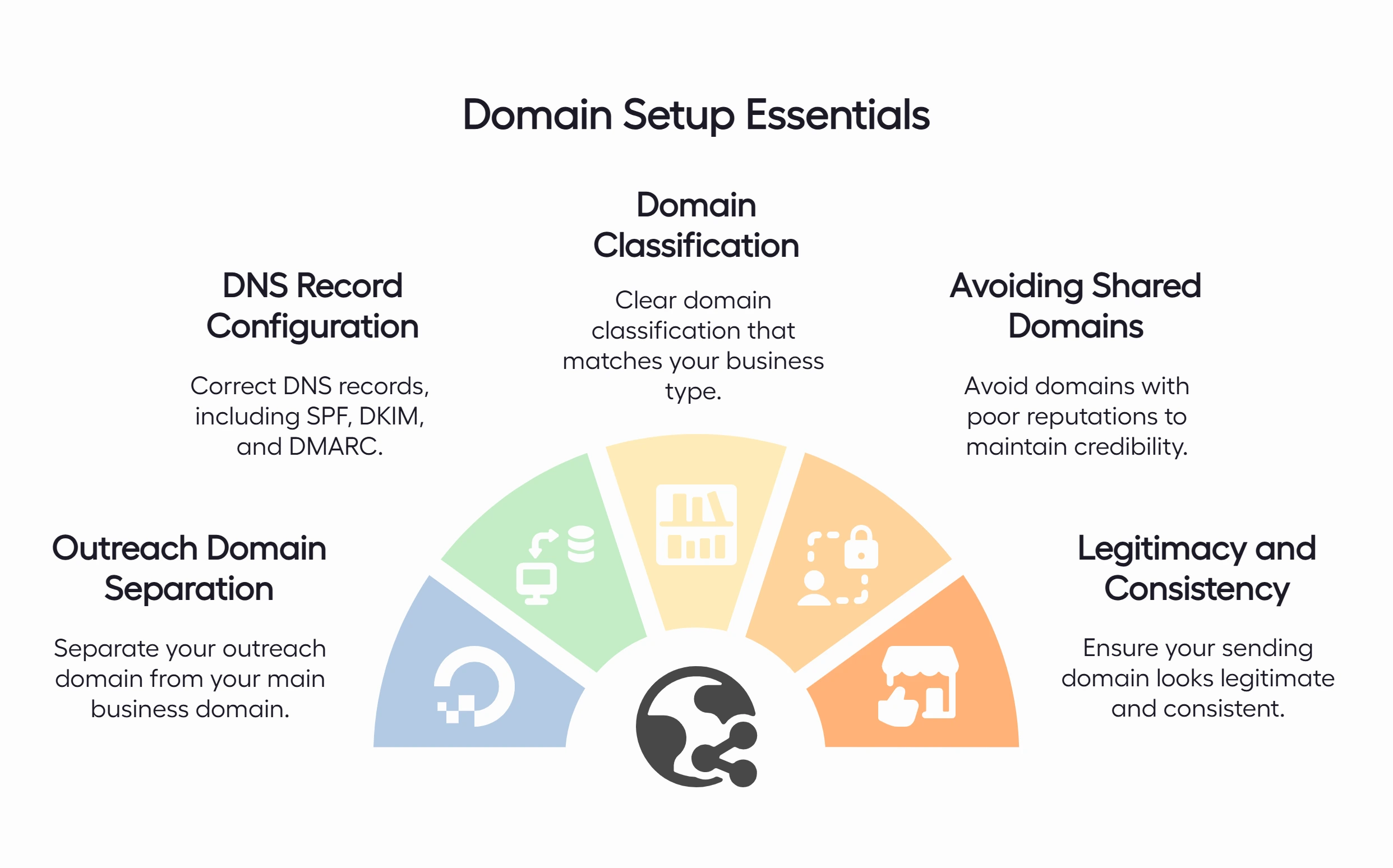
When your domain is properly configured, inbox providers trust you. That trust translates directly into better deliverability, higher inbox placement, and fewer emails getting lost in spam or promotions.
- Keep Your Lists Clean and Authenticated
A messy leads list kills deliverability faster than a weak subject line. Typos, outdated contacts, and inactive emails trigger bounces and spam flags, which makes inbox providers suspicious.
Focus on contacts who want to hear from you, and segment based on industry, role, or behavior. Double-check details to avoid simple errors that can tank your campaign.
Keep in mind that clean, targeted lists don’t just improve deliverability. They boost replies, and the ROI of every email you send.
Ensure your lead list is the best it can be with our simple steps on how to build a quality lead list for cold emailing.
- Stay Away From Spammy Content
Even a perfect domain and a clean list won’t save your emails if they look like spam. Certain words, too many links, or messy formatting can get your messages buried before anyone even sees them.
The trick? Keep your emails clear, human, and relevant. Skip the cheesy sales phrases, endless links, and gimmicky formatting. Write like a person reaching out to another person, not a robot blasting generic pitches.
Want your emails to actually get opened and replied to? Check out our guide on how to write the best cold email for optimal results.
- Write Subject Lines People Actually Want to Open
Your subject line is the first thing prospects see, so it often decides whether your email gets opened or ignored. Generic, clickbait, or vague lines? Forget it. They get skipped, deleted, and the exact thing we are trying to avoid – marked as spam.
The key is to make it personal, clear, and relevant. Reference something specific about the prospect or their business, hint at value, or spark curiosity without overpromising. Keep it short, punchy, and impossible to scroll past.
- Make It Easy to Reply (and Opt Out)
If you want people to respond, make it simple for them to reply. A confusing reply process or a generic “no-reply” address creates friction and reduces engagement.
At the same time, an unsubscribe text keeps you compliant with email laws like GDPR and CAN-SPAM, and it signals trustworthiness to both recipients and inbox providers.
A clear reply path combined with a transparent opt-out process improves engagement and helps protect your sender reputation.
- Send at a Steady Rhythm
Think of your sending schedule like a heartbeat. Irregular blasts make spam filters nervous and frustrate your prospects.
Keep your outreach consistent and predictable. Regular pacing signals trustworthiness to inbox providers and improves deliverability.
Consistency also lets you measure and optimize performance. You can spot what’s working, tweak what’s not, and maintain momentum without spiking bounces or complaints.
Learn how many cold emails to send per day in our ultimate guide and crack the code on finding your perfect daily sending volume.
- Respect Privacy and Compliance Rules
Inbox providers aren’t just scanning for spammy content – they check whether you follow privacy and compliance rules. Regulations like GDPR, CAN-SPAM, and CASL exist for a reason: failing to follow them can tank your deliverability and damage your reputation.
Treat compliance as part of your deliverability strategy, not just a legal checkbox. The better you respect your recipients, the more inboxes you’ll reach.
- Monitor Your Deliverability Regularly
Getting your emails set up properly isn’t a “set it and forget it” task. Even small changes in your sending habits or list quality can trigger a drop in inbox placement.
That’s why regular monitoring is essential. Keep a close eye on metrics like bounce rates, spam complaints, reply rates, and inbox placement. These signals show whether your emails are actually reaching your audience or getting stuck in spam or promotions folders.
We’ve found that campaigns with consistent monitoring see far higher inbox placement and response rates than those left unchecked.
- Encourage Engagement
Inbox providers notice when people actually interact with your emails. Getting replies screams “This sender is legit!” Low engagement? That screams spam.
So, the goal is simple: get recipients to act. That could mean replying, clicking a link, downloading a resource, or forwarding your email.
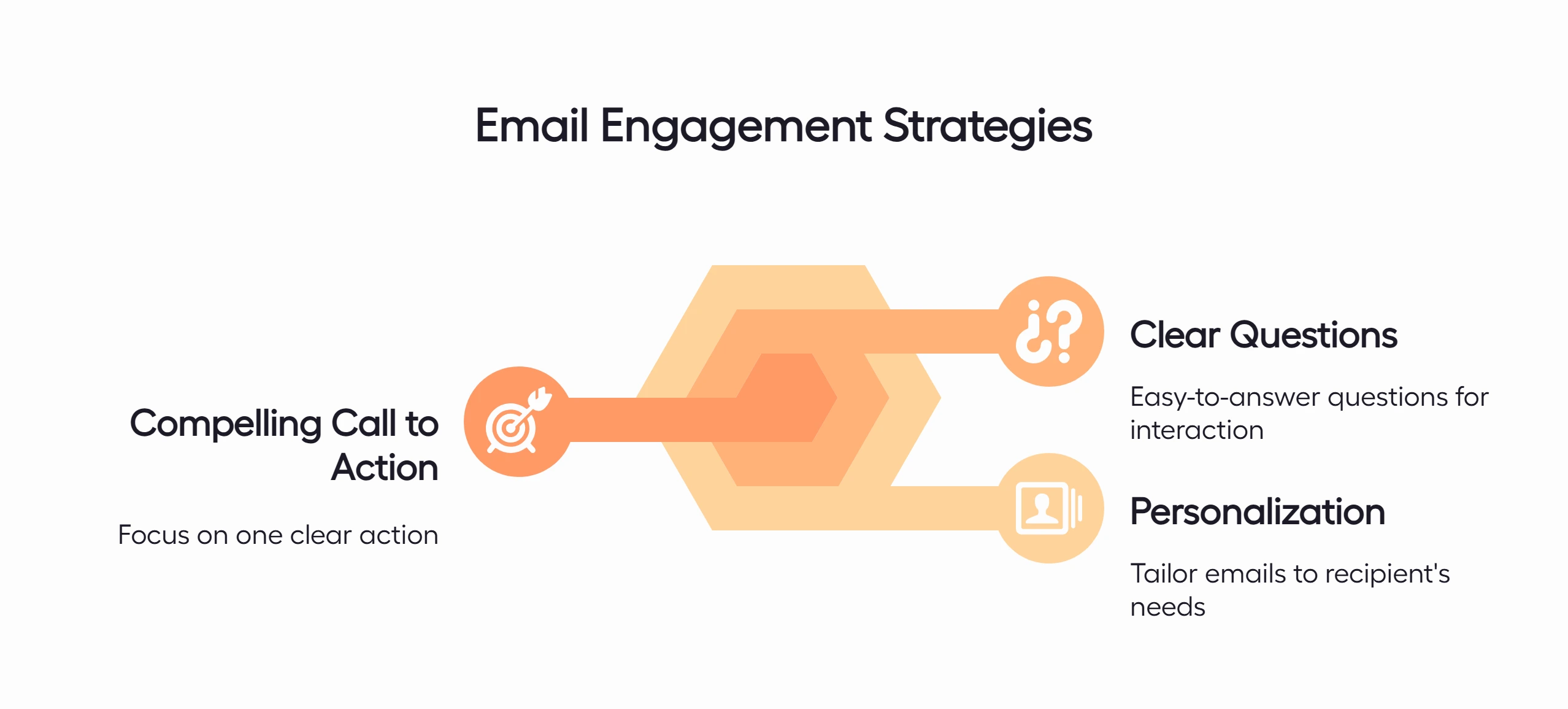
Every interaction reinforces your credibility in the eyes of inbox providers.
- Avoid Overloading a Single Domain or Inbox
It might seem convenient to send all your cold emails from one domain or inbox, but doing so is a fast track to deliverability problems.
If too many messages go out too quickly from the same domain, or if that inbox starts generating bounces, spam complaints, or low engagement, providers will penalize it. This sinks future campaigns before they even start.
A simple way to avoid this is to spread your campaigns across multiple domains or inboxes and keep your sending volumes consistent.
Think of it like pacing a workout. Slow and steady keeps your “reputation muscles” in shape, while sudden spikes or massive blasts only create problems down the line.
Leveling Up Your Deliverability Game with Advanced Practices
Now that we’ve talked about the fundamentals, it’s time to look ahead. Sending at scale comes with a new set of rules. Inbox providers get stricter, and the shortcuts that worked with small lists won’t always cut it.
To keep performanчce steady as you grow, you’ll need to layer in more advanced techniques. Here are our top tips if you want to take your deliverability game to the next level:
- Domain and IP Rotation
Spread sending across multiple domains and inboxes to mimic natural patterns and reduce risk. At scale, one domain can’t carry the weight without raising flags. - Subdomain Strategy
Instead of one outreach domain, use carefully structured subdomains (e.g., hello.brand.com, outreach.brand.com). It diversifies sending and builds deliverability resilience. - Engagement-Based Throttling
Don’t blast your entire list at once. Roll out in waves, prioritizing high-engagement segments first. Providers see engagement early and reward the rest of the send. - Blacklist Monitoring and Recovery
At scale, even clean senders occasionally get listed. Use tools to track blacklists daily and have a playbook for quick recovery (appeals, IP resets, domain swaps). - Seed Testing and Inbox Placement Tracking
Seed addresses in Gmail, Outlook, Yahoo, etc., to test where your emails actually land. Inbox placement reports tell you what needs fixing before you scale further. - Adaptive Sending Windows
Adjust send times dynamically to avoid patterns that look like automation. Think varying windows instead of blasting at 9:00 AM sharp every day. - Deliverability-Focused Infrastructure
Advanced senders often use dedicated SMTP relays or providers built for scale. This gives you more control and less exposure to “bad neighbor” effects. - Engagement Recycling
If a prospect never opens after X touches, pause for months and re-test with a fresh angle later instead of burning their inbox repeatedly.
Key Metrics For Email Deliverability to Watch Closely
If you want your cold emails to actually land, tracking the right metrics is non-negotiable.
These are the key numbers email pros monitor every single day to dodge spam, protect sender reputation, and hit that sweet spot of 95%+ inbox placement.
Keep in mind that most advanced email tools give you all these metrics in one dashboard, so you can catch issues before they snowball.
Quick Checklist: Cold Email Deliverability Best Practices
Okay, we’ve just given you all the secret know-how on email deliverability. We know it’s a lot to take in, and that’s totally normal.
That’s why we’ve boiled it all down into a simple, actionable checklist you can actually use. Follow this every time you launch a campaign, and your emails will have the best shot at landing in the inbox.
Cold Email Deliverability Checklist:
- Authenticate your emails: SPF, DKIM, DMARC all set and passing.
- Warm up new domains gradually: Build trust with inbox providers before scaling.
- Use the right domain setup: Separate outreach domain, proper classification, consistent reputation.
- Keep your lists clean and targeted: Remove inactive contacts, fix typos, focus on relevant prospects.
- Avoid spammy content: Skip spammy words, excessive links, and gimmicky formatting.
- Craft subject lines that get opens: Personal, relevant, and clear – avoid generic clickbait.
- Make it easy to reply and opt out: Clear reply paths and unsubscribe options to maintain trust.
- Send at a steady rhythm: Consistent sending patterns signal reliability to inbox providers.
- Respect privacy and compliance rules: GDPR, CAN-SPAM, CASL – stay on the right side of the law.
- Monitor your deliverability regularly: Watch bounce rates, spam complaints, inbox placement, and authentication.
- Encourage engagement: Make emails actionable, relevant, and worth interacting with.
- Avoid overloading a single domain or inbox: Spread sending volume to protect reputation.
Think of this as your cold email survival kit. Check it before every campaign and your emails won’t just reach inboxes. They’ll get read, clicked, and acted on aka everything we are aiming for!
Your Cold Emails Are About to Start Landing
We’ve unpacked every tactic, trick, and strategy to get your emails out of spam and in front of real people. Now, you know exactly what it takes to make cold email deliverability work in your favor.
So what happens when you put these practices into action? Get ready, your inbox is about to get a lot more interesting.
Instead of sending hundreds of emails and getting a handful of tepid replies, you could see engagement rates 5x higher. Think opens, clicks, replies, and conversations that actually move deals forward.
At Hypergen, B2B lead gen and optimizing deliverabilty is our bread and butter. After sending, warming, and monitoring tens of thousands of cold emails, we’ve honed every step to make sure messages land where they should – no luck involved, just systems that work.
So, if your current campaigns feel like shouting into the void, we can change the game.
Follow these strategies or give us a call, and watch your outreach turn into a reliable pipeline of conversations and opportunities. Your inbox won’t just be active – it’ll be productive, profitable, and worth paying attention to.
Fair warning: You might actually have to schedule more meetings than you expected. That’s the kind of problem we’re happy to create.
FAQs
What are email deliverability best practices?
They’re the strategies that make sure your emails reach inboxes instead of spam. That means authenticating your domain, warming it up gradually, keeping lists clean and targeted, avoiding spammy content, and sending consistently. Nail these, and your cold emails get a real shot at being opened and replied to.
How can I improve my cold email deliverability?
Start with the basics: set up your domain properly, warm it gradually, clean your lists, avoid spam triggers, and track your performance. Then layer in engagement tactics and steady sending habits. Each step builds trust with inbox providers and improves your results.
Why do some cold emails land in spam instead of the inbox?
Even perfect copy can fail if your domain looks suspicious, your list has inactive contacts, your content triggers filters, or your sending volume is erratic. Inbox providers are watching every detail.
How long does it take to see results from email deliverability improvements?
Some improvements, like proper authentication and list cleaning, can have immediate impact. Others, like warming new domains and building engagement, take a few weeks. Stick with it, and you’ll see sustained inbox placement and higher response rates.
Don’t miss these
Frequently asked questions

Get Your First Lead This Month
14 days to get started. 7 days to get your first lead on average.






